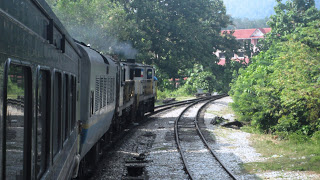
This post is from an older blog of mine from when I was on a Sabbatical and traveled overland trip from Southeast Asia to Europe. As much as possible, I traveled by trains.
We pull out of Singapore’s Tangong Pager Railway Station right on time, promptly at 4:30 AM. As we board the train, a Malaysian official stamps our passports. The train slowly moves through the dark city that’s not yet ready to come to life, the coaches swaying back and forth on the tracks. In two more weeks, this train will cease to exist. Everything is dark. I think back to the day before when I visited the station to see it in daylight. It’s a grand station, like many built in the early 20th Century. It was still young and in its prime when the Japanese invaded. Yesterday, I spoke with an old Chinese man who had come to see the station one more time, while the trains were still running. He told me about being an older child when the Japanese forced all the Chinese into the station and several other places around the city. Then soldiers came and randomly selected people and forced them to march to the beach, where they were shot and left for the tides to claim.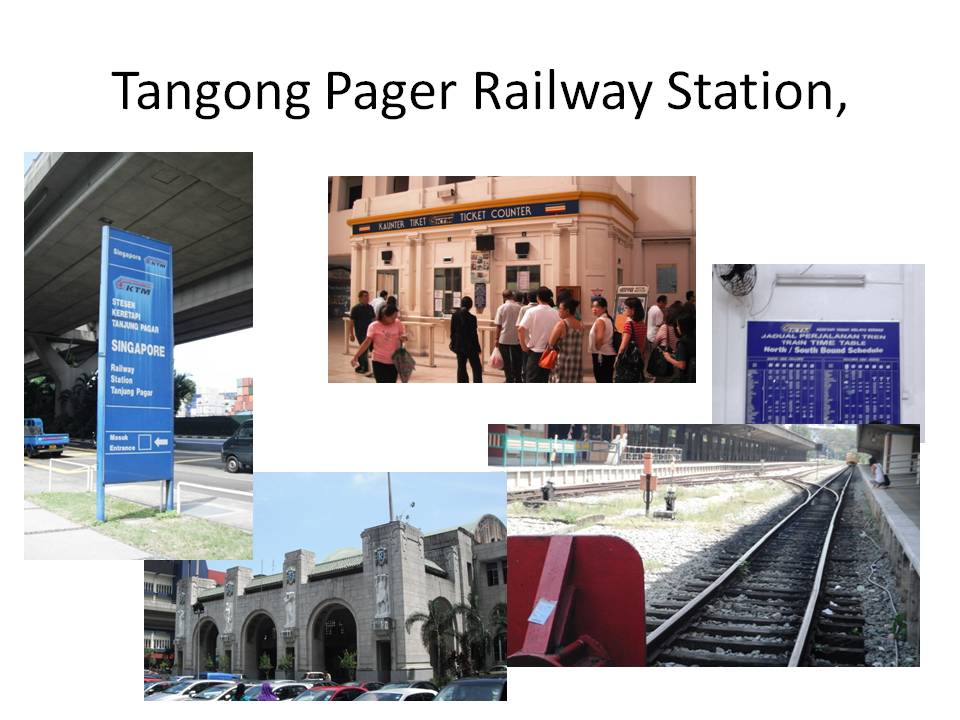
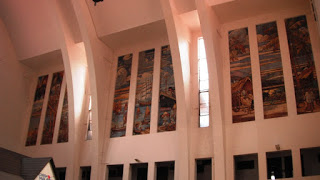
I arrived by cab at the station around 3:30 A.M. It was still dark, but the front door was open. The great hall was dark, but people had already started to gather, so I found a seat on one of the wood benches and waited, trying to catch a bit more sleep. At 4 A.M. the lights come on and I notice the large murals of rural Malaya life that lines the walls. All this was build when Malaya was a British colony and Singapore was just another city. But as the British pulled out, Singapore established itself as a separate country. I buy a water bottle and some snacks from a vendor and then, once the gates to the tracks are open, head over and join the line. The Malaysian official by the gate wastes no time checking documents and asks no questions as he stamps our passports. We’re sent out into the humid heat of early morning. I walk down the platform, under the hanging railroad clock that no longer works, to the five waiting coaches. These cars are attached to a power car that’s billowing diesel fumes as it provides electricity and air conditioning for the coaches. As of yet, there are no locomotives. I hop aboard, seeking relief from the heat, and find my seat. A few minutes later, we’re jarred as the locomotive is coupled to the train. Shortly afterwards, we leave and weave our way through the city.
The lights are dim and I’m about to nod off, when we abruptly stop and the lights come on. We’re told to get off. It’s only been twenty minutes or so since we started and I’d forgotten about this stop. We’re at Woodlands, on the far side of the island at the causeway and we have to go through immigration. Starting July 1, 2011, this is where the train will begin as the tracks through Singapore will be removed and the land used for development. We’re told we can leave our luggage behind (I still take my daypack) and shuffle out onto the brightly lighted platform and lineup behind the yellow line waiting to meet with the official. I scan the crowds. There is only one other western couple that I pick out, a Brit and his wife who live in Singapore. They are in the line for Singapore residents. Our entry cards for Singapore are taken and our passports checked and stamped. We then circle back around and re-board. It’s interesting that Malaysia stamped our passports at the Singapore station, before we get to the border, and we’re officially “checked out of Singapore” here.
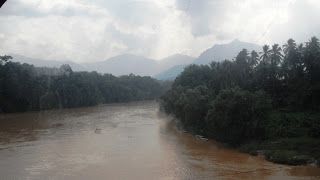
As soon as we’re onboard, the roar of the diesel is heard as we’re pulled across the causeway. The docks along the shoreline here light up the night air. We move slowly and shortly after reaching the mainland, we stop again, in Johor Bahru, Singapore’s sister city on the mainland. More people board the train.
In preparation for this trip, I had read Colonel Masanobu Tsuji’s account of the Malaya campaign in 1941—42. He was the staff office in charge of operations for the Japanese and after the war wrote an account of the Japanese planning and execution of this invasion in a book that was translated into English in the 1960s. Japan’s Greatest Victory: Britain’s Worst Defeat tells how the Japanese army was able to quickly move down the Malaya peninsula, using cheap Japanese bicycles on the excellent British roads, never allowing the much larger British force time to set up a defense line. When they reached Johor Bahru, the Japanese command set up offices in the Sultan’s Palace, an exposed position, but one that gave them the best view of the vast island that was their objective. From here, they directed their armies in their operations to break through Singapore’s defenses. Britain had felt that they could easily defend the island (just blow up the causeway), but their defenses were mostly on the seaward side. They were caught surprised by a fast moving Japanese army. Only when the Japanese got to this point was Britain able to slow their march, as they turn their big sea-facing guns around and used them to bombard the Japanese positions.
It’s raining as the train pulls out of Johor Bahru. I make myself comfortable, putting a pillow up against my window and fall asleep. I wake up an hour later, at Kluang. A crowd of people are boarding the train and a Malaysian man sits next to me and soon there are a dozen children crowding in around us. The man and his brother are traveling with their families and their kids range from about five to fourteen. The older children collaborate in translation and throughout the trip. Their father moves to another seat, allowing each of the children opportunity to sit a next to me. The older ones practice their English, the younger ones play silly games, always laughing and smiling. I show the pictures of my family. Wishing to have more photos, I pull out my netbook and show them photos on the computer. Other adults in the surrounding seats ahead of me turn around to see and all seem amazed at the photographs of my daughter skiing. Living near the equator, these children can’t imagine snow.
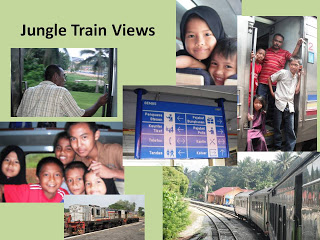
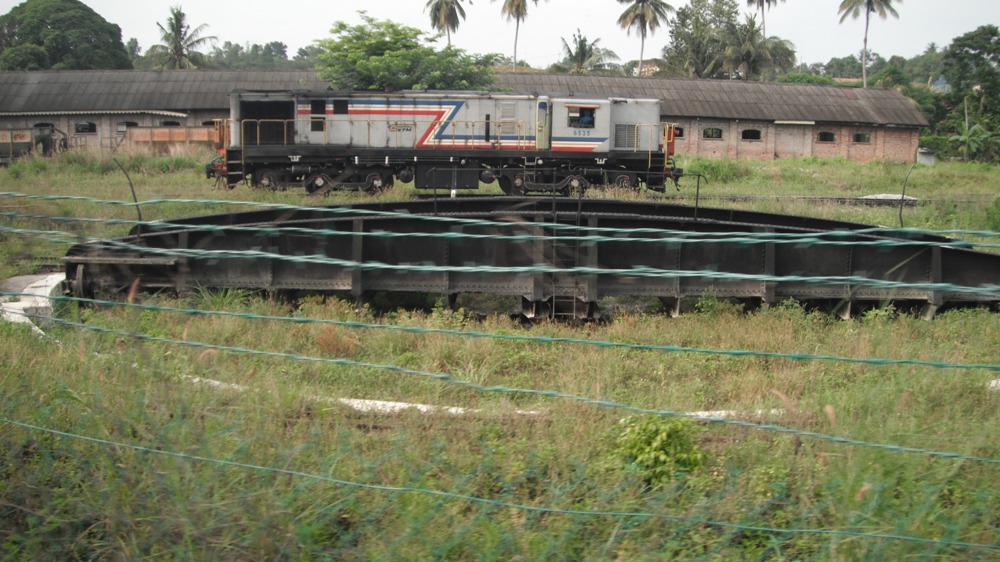
The train makes a long stop at Gemas, where they change engines. It’s just a small town and doesn’t appear on my Southeast Asia map. But it was an important town for the Japanese to capture in the Malaya campaign. The town is a railroad crossroads and securing the town cut Butterworth, Penang and Kula Lampur’s land connection to Singapore. There’s a lot of work going on the tracks here as KLM, the Malaysian Railroad, is building a doubled-track electric line all the way from the Thai border to Gemas. The Northeast Line (which I am riding) will continue to use diesel electric locomotives (I’m told the ones we’re currently using are built in India). The train consists only of coaches. There is no dining car and I’m glad I’d brought snacks along for the only food available to buy is in a cart that gets pushed around once during the trip and consist mostly of water, juice and chips.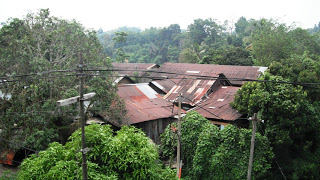
Much of this land is filled with large plantations of palm oil or rubber trees. And then there is the jungle, places were the vegetation is so thick that one could easily get lost. When we travel through jungle areas, the greenery is so close that the windows become a psychedelic blur. The Japanese, when they moved down the peninsula in late ’41 and early 42, found that having a smaller force wasn’t necessarily bad as the battlefields were so narrow due to the jungles. Some of the vegetation looks like kudzu, the plant from Asia that has taken over areas of the American South. Old warehouses and buildings no longer in use are covered with the vines. The towns along the tracks are small, mere villages. There is no rice (Malaysian rice is mostly grown on the west side of the peninsula). Roofs here are mostly of rusty tin, which makes sense with Malaysia also being a large producer of the metal.
A little later in the morning, I’m standing by the open door at the end of the car. My seat mate from early in the morning is sitting in the open door, rolling what has to be the skinniest cigarette I’ve seen. He offers me one, but I decline. I’m making use of the open door to snap photographs without having to deal with dirty windows. Another man asks me where I was going and we begin to talk about my trip across Southeast Asia and China and on to Russia and Europe. It turns out that he’s done much of my planned trip by rail, including the trans-Siberian. We talk about trains and he tells me the best are in Iran. I laugh and acknowledge that I’ve heard good things about Iranian trains, but that Americans are not especially welcomed there. We talk, off and on for the rest of the trip, until his stop which was 30 minutes or so before mine. His name is Mahud. When he tells me that Detroit is his favorite place in America, I wonder if I should check his temperature and see if he’s feverish. But he goes on to say that there are many Muslims there. Although he’s not wearing any of the traditional religious garb (like the guys looking a lot like Bin Laden, in white robes and turbans), he’s a devout Muslim with a PhD in Islamic Studies from a Saudi school. We talk about religion and my travels. I also learn that his brother, who teaches Chemistry in KL (as people call Kula Lampur), has a doctorate from Ohio State…
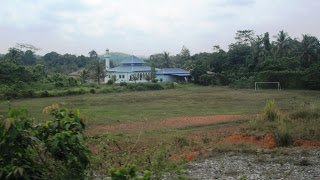
Mahud’s wife is Chinese. I ask which part and he says “Canton.” Surprised, I told him that I thought most of the Chinese Muslims were in the western part of the country. “There are very many Chinese Muslims,“ he assures me, “more than any other country.” I question his statement, having always heard that Indonesia had the most Muslims. He then complains about Indonesia, saying that there, a man can be a Muslim with a Christian wife and a Buddhist son. In Malaysia, the state bans Muslims from converting to other faiths. When I question if the government should enforce one’s religion, he backs down and says only God can change what is in the heart. I agree. He also complains that in Malaysia, only ½ of the people are Muslim (another questionable fact). But when I prod him some, I get the impression he’s talking about those who take their faith seriously, not those who claim to be of the Islamic faith.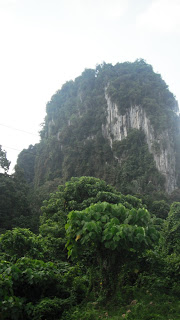
My conversation with Mahud isn’t limited to religion even though we do spent a lot of time discussing it. At times, he stops to point out sights along the way. Near Gua Musang, we pass the first of limestone hills that appear so prominently in Asian art. He points to the caves in the humpback hills. At Kemubu, he notes some of the highest points in Malaysia (at least on the mainland). There is a waterfall here that he wants me to see, but unfortunately clouds and haze now blur our view, making it difficult to see anything clearly. After Dabong, he notes that we’re on a part of the track where the sun will come up in the west (the track goes south for a bit here as it navigates the mountains).
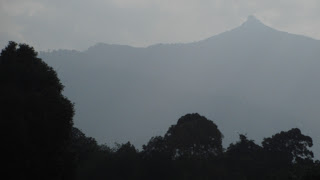
Later in the afternoon, rain sets in and by the time the train arrives at Wakaf Bharu, the stop for Kota Bharu, it’s pouring. This city was the first in British Malaya to be attacked by the Japanese early on December 8, 1941. The attack happened only a few hours after Pearl Harbor was attacked, but being on the other side of the International Date Line, it was already December 8th. I get off with most of the remaining passengers that’s left on board. The train will continue on a few kilometers to Tumpat, near the Thailand border. The Jungle Train has been a magical experience. With few Westerners on board (I did get to talk with the two Brits after Mahud and the kids had departed), I’ve been able to make some new friends. Mahud had even given me directions to his house in case I want to stop by. I thanked him, but insisted I wasn’t going to be in East Malaysia long.
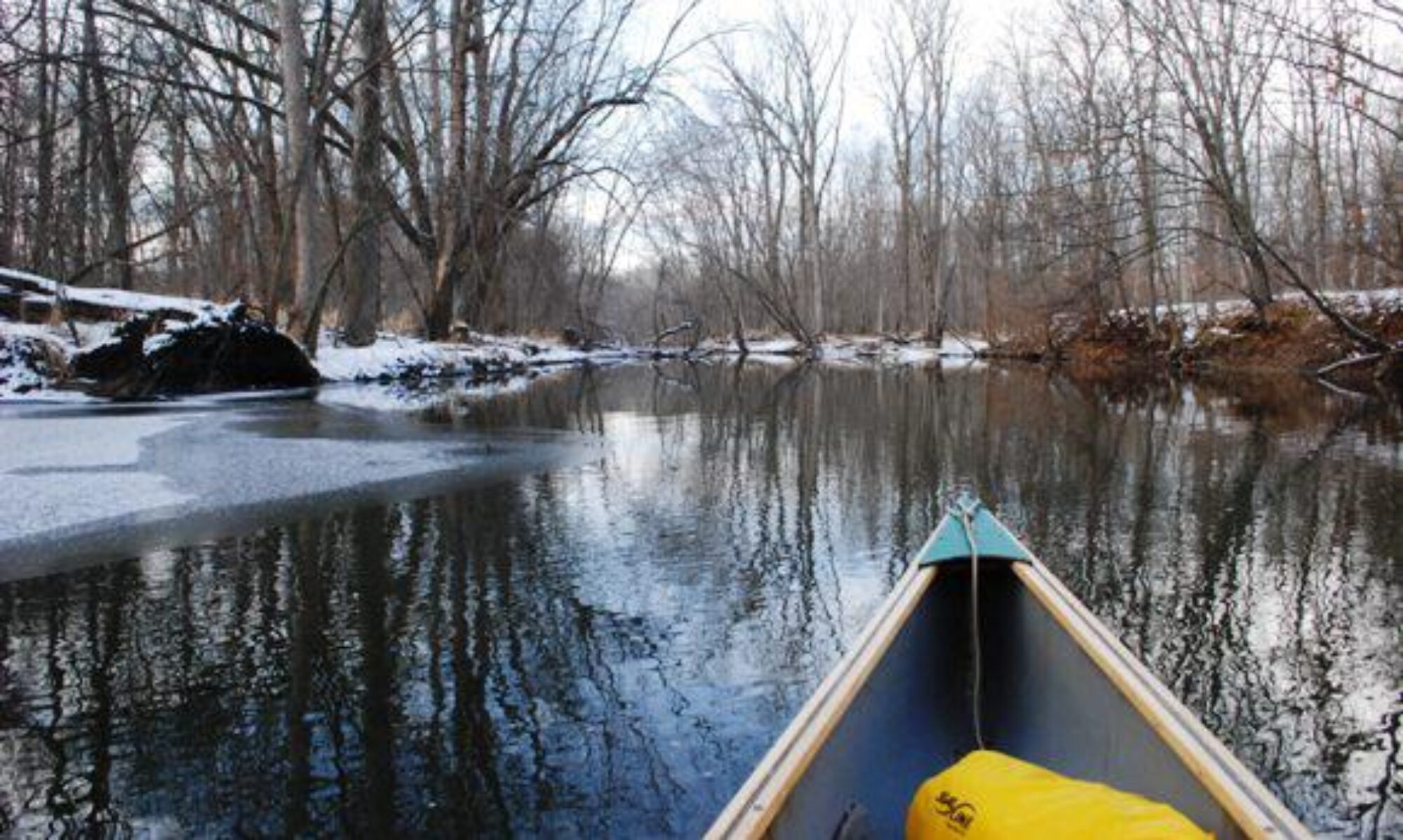
Malaysia is wonderful country…
love the train and greenery….
thank you for sharing the story and photos.
You had some good discussions, interesting encounters and took a bunch of great pictures.
Fascinating trip. My Dad would be interested to read this (if he ever went online) as he spent time in Malaysia
Was he there with the British army? It’s a beautiful but screwed up nation that struggles as the Indians and Chinese residents (many who have been there for generations) prosper more than the native Malay, which creates turmoil and bitterness.
What an interesting journey this sounds.
Loved reading about it and seeing the photographs you’ve shared.
All the best Jan
This must have been a fantastic sabbatical. I’m glad you’re reposting some older things for those of us who haven’t read your blog for that long.
Fascinating account of your trip. I enjoyed seeing your photos and reading the narrative of your journey.